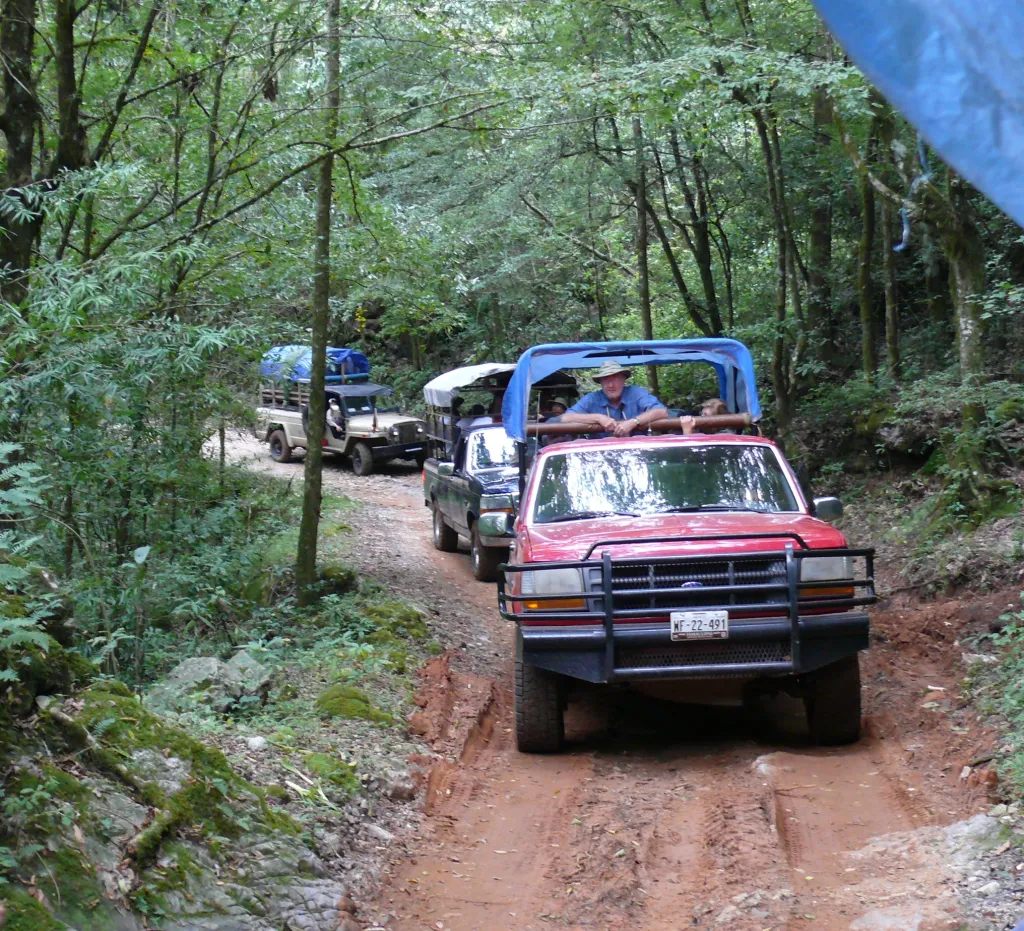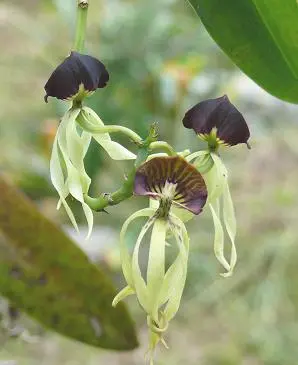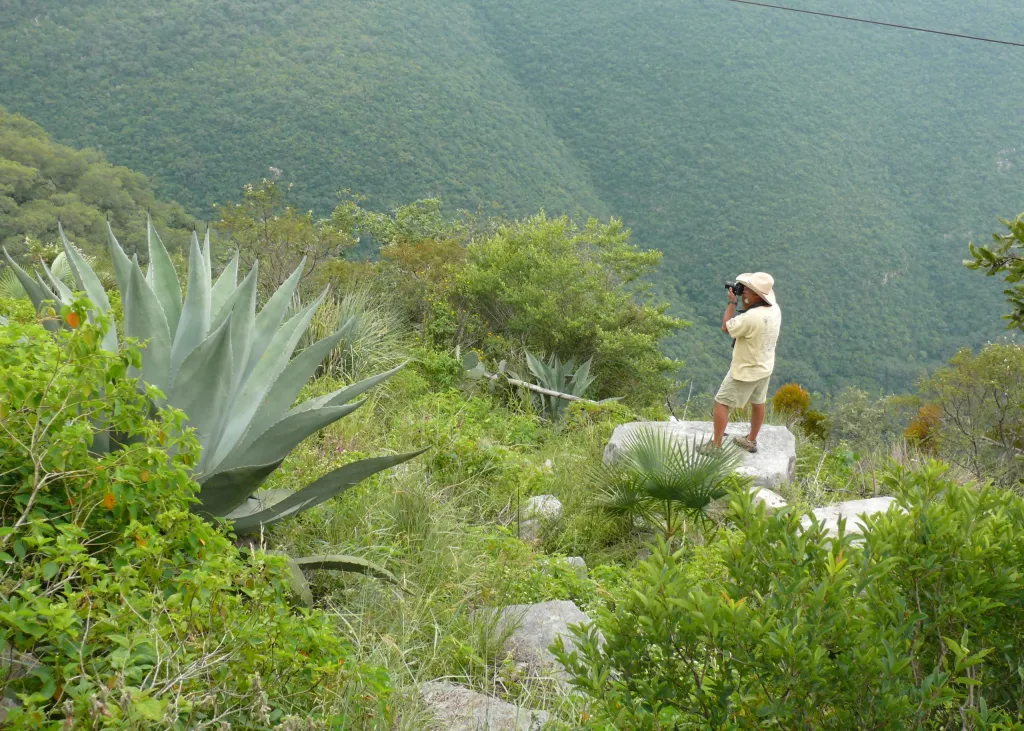Author: Bill Ward
“Cielo” usually means sky or heaven or paradise, sometimes roof or canopy. Every one of these translations probably could apply to some aspect of El Cielo Biosphere Reserve in the state of Tamaulipas, Mexico. I think probably “paradise” is the best meaning to use for this region, at least as far as native-plant diversity is concerned.

This part of the Sierra Madre Oriental includes the northernmost cloud forest in this hemisphere, and it is not very far from the Texas border. El Cielo is only about 250 miles due south of McAllen. This unique area was saved from being devastated by lumbering when over 356,000 acres was set aside as a nature preserve in 1987.
El Cielo area has long been a destination for birding and butterflying. In past years, Kathy and I have been on a couple of the birding tours run by a Mexican group that is working to promote ecotourism in the Reserve. One of the leaders of this ecotour group is Sergio Medellín, an ethnobotanist who has worked in the El Cielo area for many years. With a little urging from us, Medellín and his partners agreed to try adding a native-plant tour to their ecotours. The first attempt proved to be a great success.

During mid September, several members of the Boerne Chapter of the Native Plant Society joined other NPSOT members from around Texas on a five-day trip to look at native plants of El Cielo Biosphere Reserve. It was an easy-in, easy-out trip to Mexico. We were loaded onto a comfortable bus in McAllen, were driven into Mexico, and five days later were returned to McAllen. During our time in Mexico, all food, lodging, and tour guiding were provided.
The trip was designed to visit various ecozones from lower elevations to mountain heights. The first days were spent on the lush eastern flank of the Sierra Madre Oriental, which receives moisture off the Gulf of Mexico. The final two days were on the dry side of the sierra. Just imagine the plant diversity we saw! And all that plant diversity is the basis for the bird and butterfly diversity. We were constantly pulled between looking at a unique plant, a beautiful tropical bird, or a colorful butterfly. Almost too much to take in.
Our first stop was to look at plants in a riparian zone. I could hardly believe there was a whole river bank of hairy maidenhair fern (Adiantum tricholepis). I thought I had been very lucky last year to have seen this “rare” species near Medina Lake, the only place it occurs in the entire USA. Apparently, it’s not so rare in Tamaulipas.

In the riparian zone, we also saw large Montezuma cypress and Mexican sycamore mixed with all sorts of unfamiliar trees and bushes and vines. Many of them look like the ficus and philodendron which are kept in pots to decorate offices and stores in the US. One plant that caught my eye was the wild orchid tree, related to our Anacacho orchid tree, but with bigger leaves and blooms.
The highlight of the trip was going into the cloud forest high in the sierra. The forest trees are a strange mixture of Mexican fir, pine, sweetgum, magnolia, Mexican sugar maple, and, of all things, a type of yew. Darker areas of the forest floor are occupied by a spectacular variety of ferns. Many different kinds of flowering plants bloom along the roadside, including shrimp plant and begonia. Epiphytic orchids and bromeliads decorate the trunks and limbs of numerous trees. It’s another world!
On the last day we visited a different “another world” on the dry side of the sierra. But there was something a little familiar here. This seemed like Hill Country and South Texas vegetation mixed with a variety of tropical oaks and cycads and stuck into a mountainside setting.
Five days in paradise is too few.
